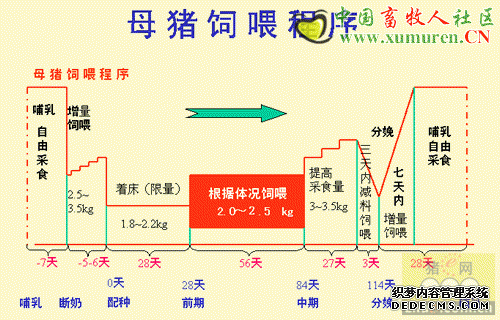On most pig farms, the biggest users of electricity are fans and heaters. Most makesventilation and heating controls offer very limited options to influence whether or not loads areon at the same time. In fact, the manufacturers often pride themselves on "keeping it simple".
So simple that they waste power. For example, they offer only on-off control of heating (oftenthe biggest user of electricity). This may be "simple", but it means loads are switched formuch longer at a time, and makes it more likely that large electrical loads are on at the sametime. (On off control also gives less stable temperatures and tends to lead to higher electricaluse as well - as shown in an earlier study - but that is another issue.)
Demand Side Management
A more sophisticated approach is "Demand Side Management". This means that a productionsite actively manages electrical demand, rather than simply relying on "passive" techniquessuch as bigger cable sizes.
It means a "joined up" approach to resources. Rather than any piece of equipment taking asmuch power as it wants whenever it wants it, power is allocated according to need, availabilityor priority.
"Standalone" control systems can't do this. They act as individual consumers. They are onlyaware of what they want themselves. Which is why there is a surge in power demand at theend of a Coronation Street special, and why the roads are clogged up on a Bank Holidayweekend. A surge in demand from many consumers is a problem for electricity supplycompanies, but not for individual consumers, unless the supply companies can't supplyenough. It doesn't cost the consumer any more, because he or she only pays for what goesthrough the meter. Losses up the consumer's meter, or problems in supply enough are downto the electricity supplier.
But it is a problem on farm where the supplier is also the consumer. Losses along the way (inthe farm's own cables) or shortage of supply are the consumer's problem and the consumer'scost.
Electricity supply companies can't control the demand to any great extent, but they do haveteams of people responding to it. People who adjust generator outputs, switch in and routepower as necessary.
Farms can't afford to have people to do it 24 hours a day, but they can have automaticequipment that does it for them. Networked control systems can have additional software thatworks out better what equipment can be on and when. For example, if there are a numberloads that only need to be on for some of the time, the software works out a way to give themall as much as they want, but not to use it at the same time.
It's what we, as consumers would do ourselves - and try to do given the chance. We all haveto get from A to B, but there is no need for us all to be at exactly the same point on themotorway at the same time. Many of us try to do it ourselves - by avoiding peak times - but it'snot that effective in isolation. If we knew that there was a slot available at exactly such andsuch a time, and if we used it we would get there faster, more efficiently, and we wouldn'thave to pay for building so many more motorways, I guess we'd all leap at the chance.
As they say, it's about working smarter, rather than working harder. Instead of putting inbigger cables or a bigger transformer, we arrange our use so that all the equipment gets asmuch as it needs, but we avoid everything wanting power at the same time.
Software based demand side management is still in its infancy in pig farm controls, and isonly made possible by increasing use of networked systems, but offers considerable potentialbenefits in both reduced capital expenditure, more efficient operation and reduced runningcosts.
Source: FarmEx - April 2004
声明
来源:互联网
本文地址:http://farm.00-net.com/yz/zhu/5/2007-09-20/142446.html








